こんにちは、杏です。
前回の松江・出雲の旅の続きを書きたいと思います。
Hello, this is Kyo.
I would like to continue writing about my previous trip to Matsue and Izumo.
お昼は出雲そばの老舗「献上そば羽根屋」へ
日御碕灯台を見学した後、お腹も空いたので羽根屋さんへ行きました(車で35分程度で行けます)。13時ごろに伺ったので駐車場は満車状態でしたので、近くのコインパーキングに駐車しました。20分ほど待った後席へ案内されました。事前予約も可能みたいです。今回私が食べたのは、「割子三段定食」。蕎麦だけだと物足りないかもと思い注文。350円増しの料金で、しじみ汁と日替わりご飯も付きますのでお得です。
After visiting the Hinomisaki Lighthouse, I got hungry and decided to go to Haneya(about a 35-minute drive away). Since it was around 1 p.m., the parking lot was full, so I parked at a nearby coin parking. After waiting for about 20 minutes, I was seated. It seems that reservations in advance are also possible. This time, I ordered the “Wariko Sandan Teishoku” set. I thought just having soba might not be filling enough, so I opted for it. For an additional 350 yen, you also get clam soup and daily special rice, so it’s a great deal.
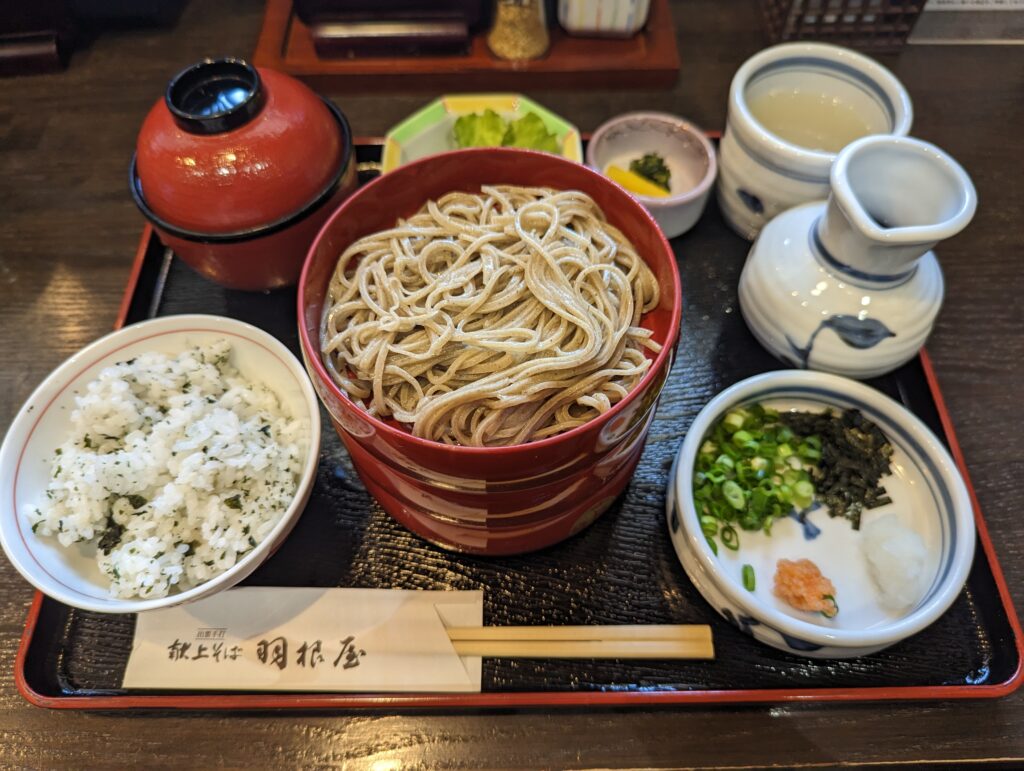
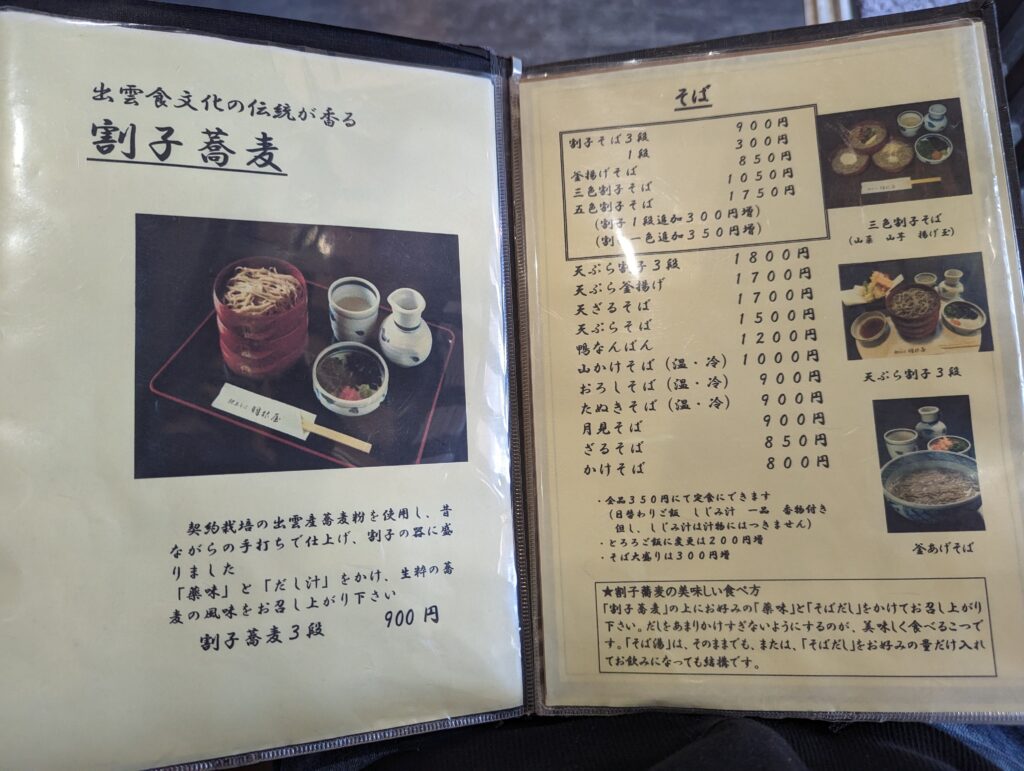

本命「出雲大社」へ参拝
さて、出雲そばも食べれたので本題の「出雲大社」へ参拝です。縁結びの神様として有名なこの神社の主神は、「大国主神大神」。ぜひみなさんも参拝に訪れてみてください。
Now, it’s time to talk about the main highlight of the trip, the “Izumo Taisha” shrine. This shrine is famous as the deity of matchmaking, and its main deity is “Okuninushi no Mikoto.” I highly recommend everyone to visit and pay their respects at this sacred place.
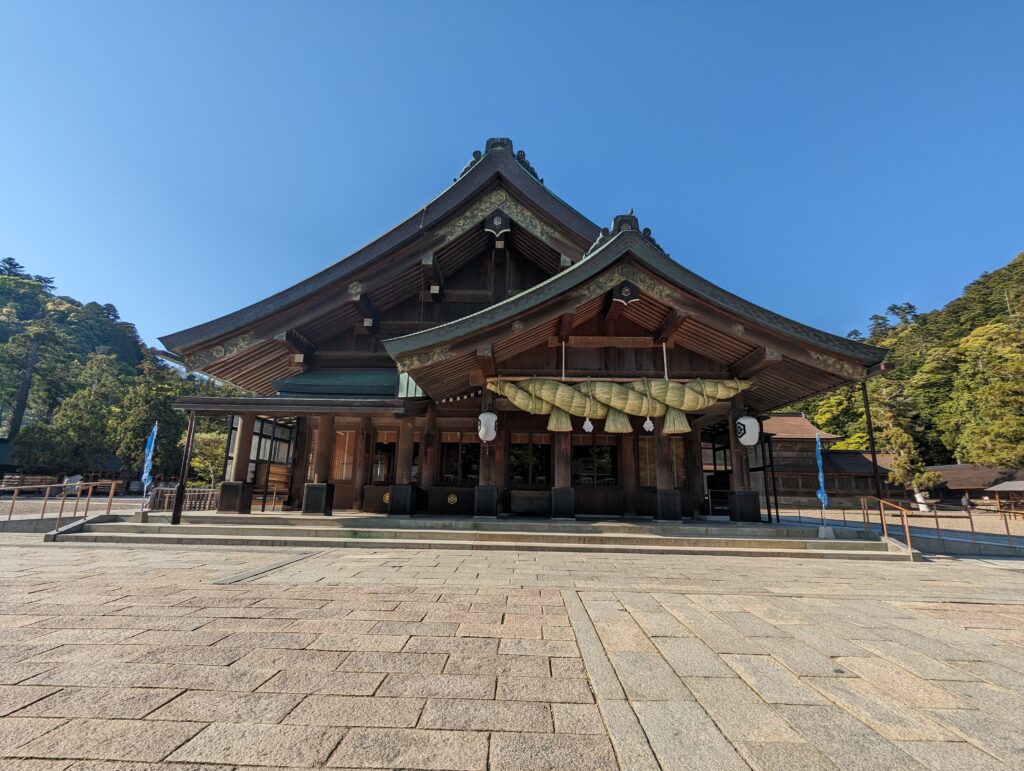
専用駐車場(無料)に車を駐車して坂を上ると「勢溜(せいだまり)」の大鳥居へ着きますのでここから参拝します。参道は全国でも珍しい「下り参道」となっていますよ。
After parking your car at the dedicated parking lot (free of charge), you will climb up the slope and reach the grand torii gate called “Seidamari.” From here, you can begin your visit to the shrine. It’s worth noting that the approach to the shrine is unique as it is a rare “downhill approach” among shrines nationwide.
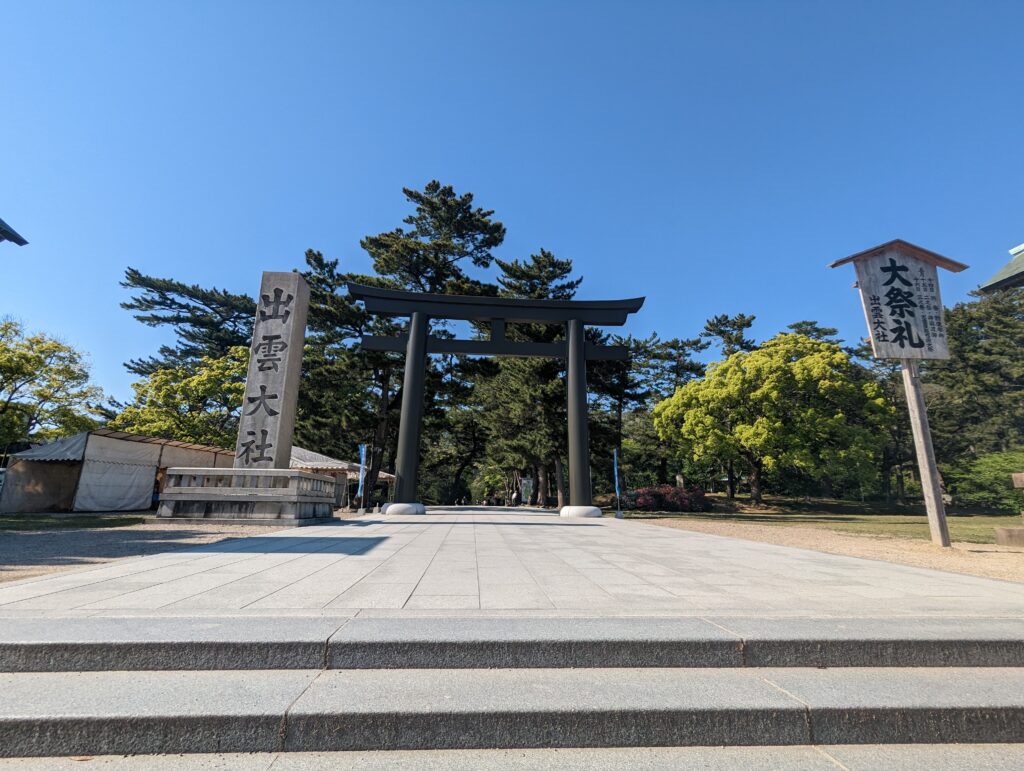
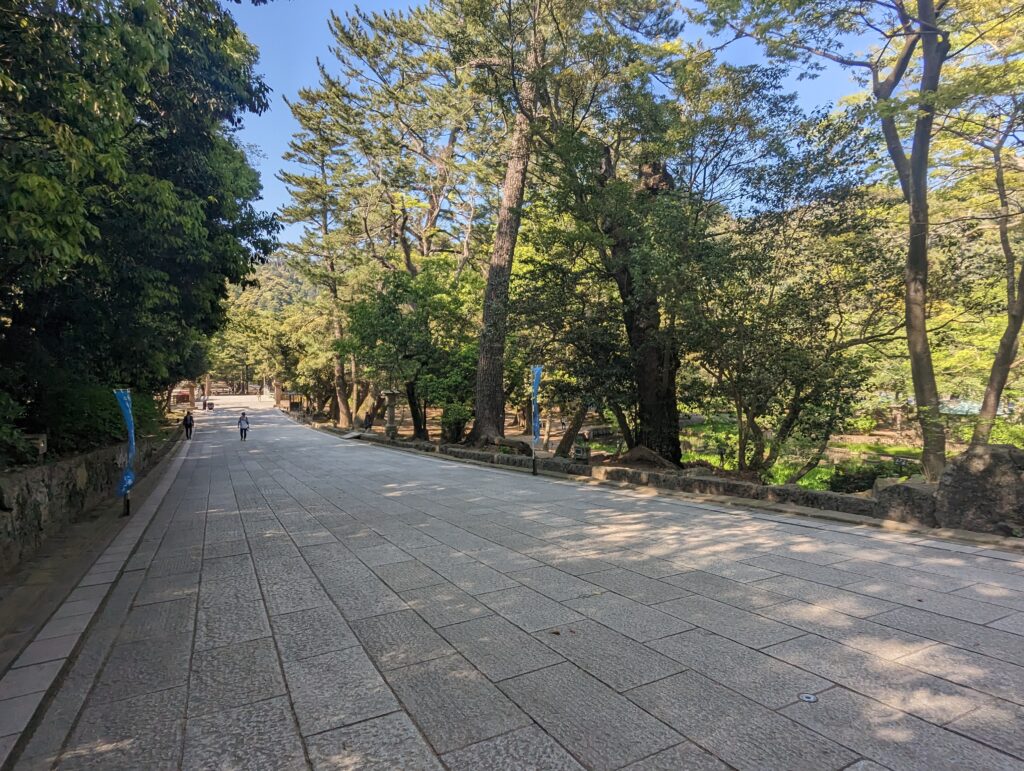
途中右手には「祓社(はらえのやしろ)」があります。こちらでまずは身を清めます。
On the way, you will find the “Harae Shrine” on your right hand side. Here, you can first purify yourself before proceeding further.
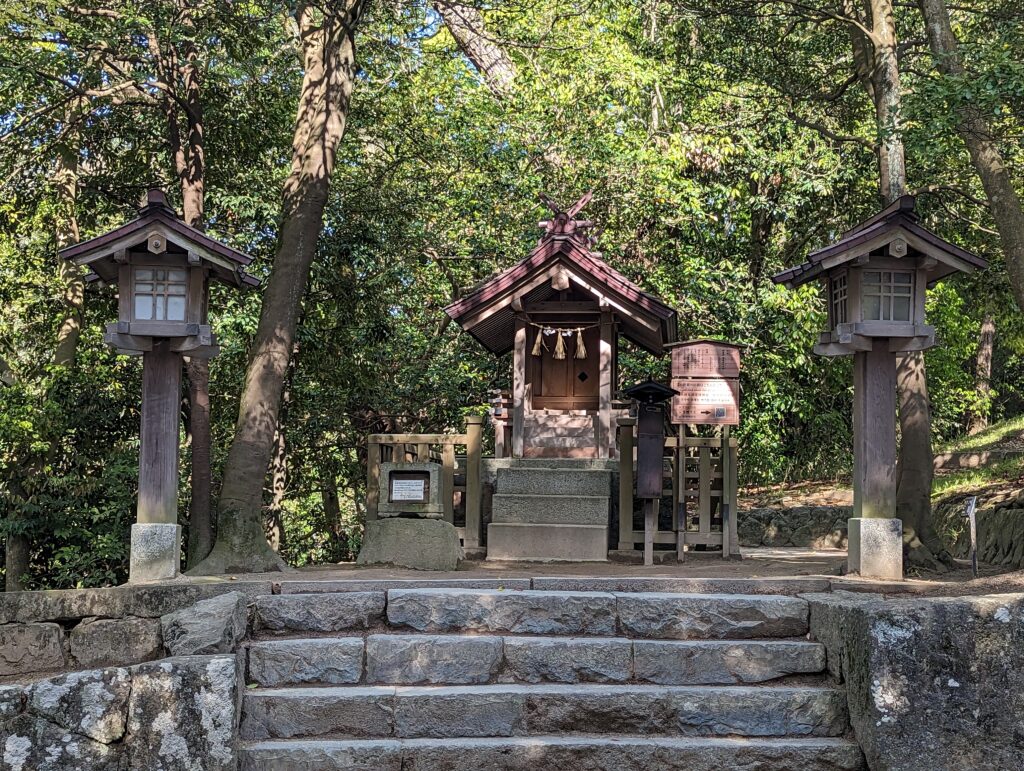
松の参道を通ると手水舎がありますのでこちらでも手と口を清めます。
As you pass through the Pine Tree Path, you will come across a Chozuya (water ablution pavilion) where you can also cleanse your hands and mouth.
手水舎の先には銅鳥居がありますのでこちらをくぐります。この銅鳥居は1666年に安芸国(現在の広島県)を治めていた戦国大名の毛利元就の子孫である「毛利綱広」が寄進したものです。
Beyond the Chozuya, there is a Copper Torii, which you pass through. This Copper Torii was donated by Mori Tsunahiro, a descendant of Mori Motonari, a feudal lord who ruled Aki Province (present-day Hiroshima Prefecture) during the Warring States period, in the year 1666.
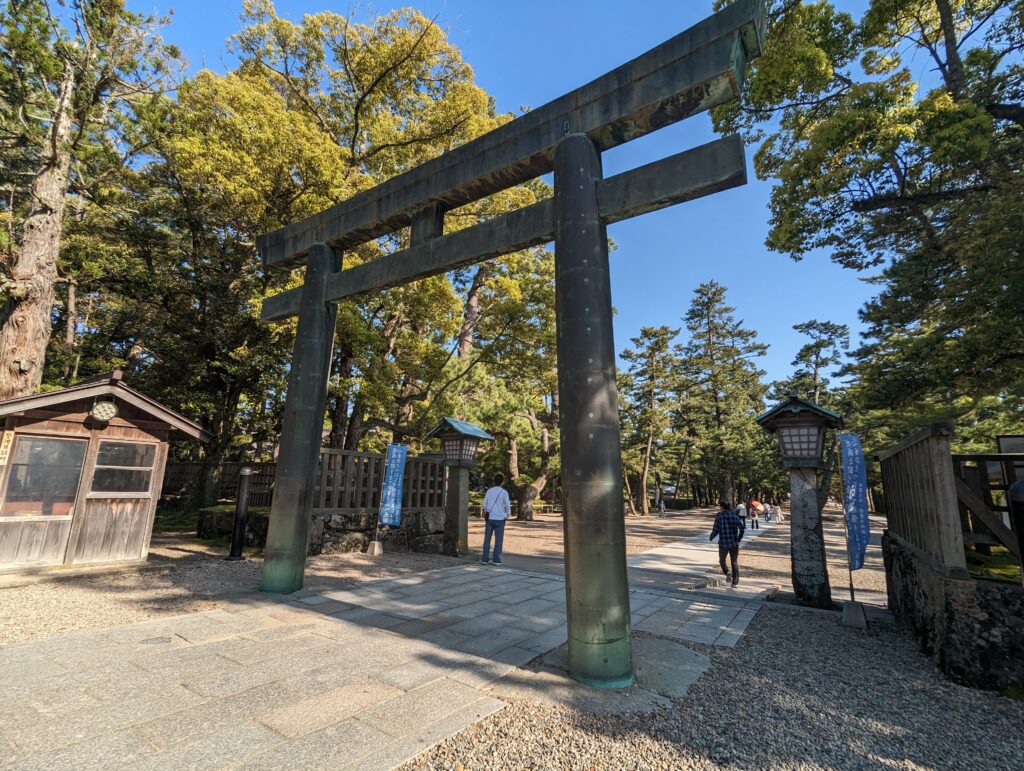
目の前には拝殿が広がります。ここでも参拝。
In front of you, there is the main hall (haiden) where you offer your prayers. Here, you can also make your visit and pay your respects.
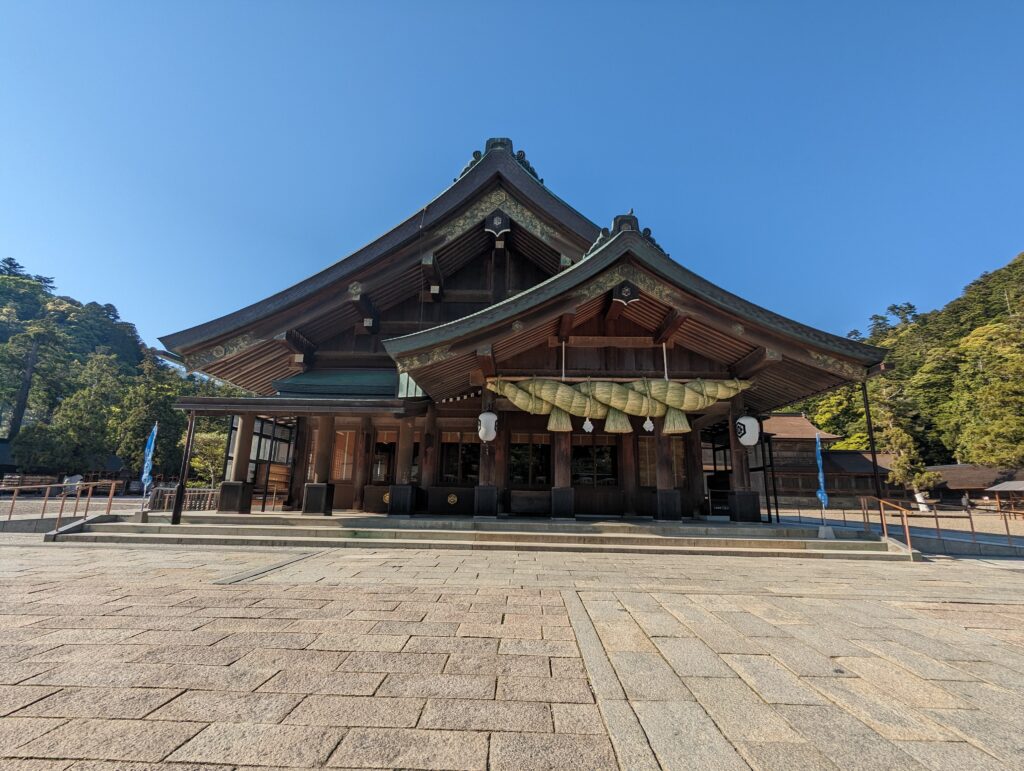
さらに奥に進むと皆さんがよく知る「御本殿」を見ることができます。この御本殿に最も近づける「八足門」にて参拝します。
If you continue further, you will be able to see the well-known “Main Shrine” that many people are familiar with. You can offer your prayers at the “Yatsuhashi-mon” gate, which allows you to get closest to the Main Shrine.

境内に入ると厳かな神社独特の空気を感じられ、心が洗われる心地がします。時間が許す限りゆっくりと参拝したいですね。やはり実際に経験してみると感じ方が全く違います。
Once you enter the precincts, you can feel the solemn and unique atmosphere of the shrine, and it gives you a sense of purification and tranquility. It’s a feeling that truly washes over your heart. If time allows, it’s wonderful to take your time and fully experience the act of worship. It’s true that the actual experience can bring about a completely different feeling compared to just hearing about it.
素鵞社(そがのやしろ)での「お砂とり」
境内の奥には「素鵞社(そがのやしろ)」があります。ここでは稲佐の浜で参拝した後に頂いた砂を交換する形で、清められた砂を頂くことができるそうです。
At the back of the precincts, there is a shrine called “Soga no yashiro.” Here, it is said that you can receive purified sand as a form of exchange, using the sand you received when you visited Inasa no Hama. It’s a unique opportunity to receive this sacred sand and be further cleansed.
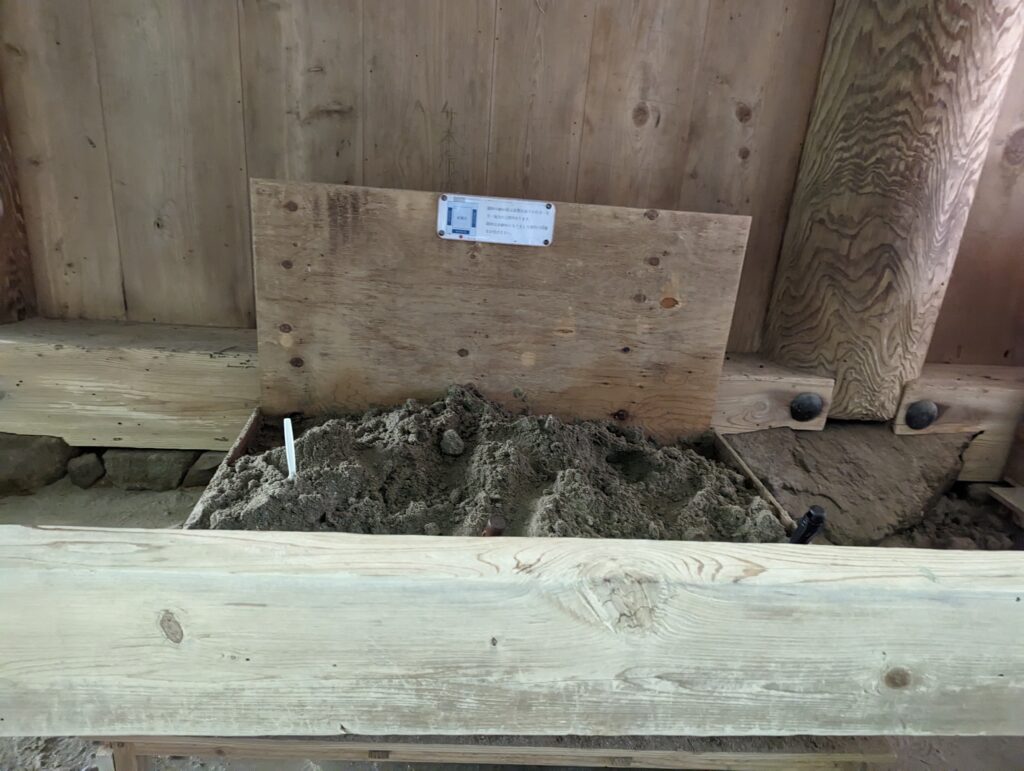

コメント